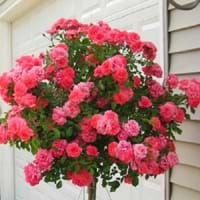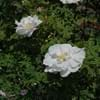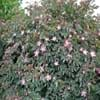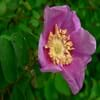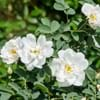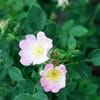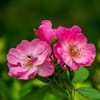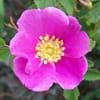What is
Life Span
Perennial
Perennial
Type
Perennial
Bulb or Corm or Tuber
Origin
Hybrid origin
South America
Types
Not Available
Pamianthe cardenasii , Pamianthe parviflora , Pamianthe peruviana
Number of Varieties
Not Available
3
99+
Habitat
All sorts of environments
All sorts of environments
USDA Hardiness Zone
5-9
8-10
AHS Heat Zone
9-1
10-8
Sunset Zone
H1, H2, 6, 7, 8, 9, 12, 13, 14, 15, 16, 17, 18, 19, 20, 21, 22, 23, 24
21,22
Habit
Upright/Erect
Clump-Forming
Information
Plant Size
Minimum Height
90.00 cm
99+
61.00 cm
99+
Minimum Width
90.00 cm
99+
61.00 cm
99+
Plant Color
Flower Color
Red, Ivory
White
Flower Color Modifier
Not Available
Bicolor
Fruit Color
Non Fruiting Plant
Green
Leaf Color in Spring
Dark Green
Dark Green
Leaf Color in Summer
Dark Green
Light Green
Leaf Color in Fall
Dark Green, Yellow green, Orange Red
Several shades of Green
Leaf Color in Winter
Light Green
Light Green
Shape
Leaf Shape
Pinnate
Strap shaped
Thorns
Yes
No
Season
Plant Season
Spring, Summer, Fall
Spring, Summer, Fall
Growing Conditions
Sunlight
Full Sun, Partial Sun
Partial Sun, Partial shade
Growth Rate
Medium
Fast
Type of Soil
Loam, Sand
Loam, Sand
The pH of Soil
Acidic, Neutral
Acidic, Neutral, Alkaline
Soil Drainage
Well drained
Average
Bloom Time
Spring, Late Spring, Early Summer, Summer, Late Summer, Early Fall, Fall
Spring, Late Spring, Early Summer, Summer, Late Summer
Repeat Bloomer
Not Available
No
Tolerances
Drought
Drought
Care
Where to Plant?
Container, Ground, Pot
Ground, Pot
How to Plant?
Cuttings
Offsets
Plant Maintenance
Medium
Medium
Watering Plants
Watering Requirements
Average Water Needs
Keep the ground moist but not water-logged
In Summer
Lots of watering
Lots of watering
In Spring
Moderate
Moderate
In Winter
Average Water
Average Water
Soil
Soil pH
Acidic, Neutral
Acidic, Neutral, Alkaline
Soil Type
Loam, Sand
Loam, Sand
Soil Drainage Capacity
Well drained
Average
Sun Exposure
Full Sun, Partial Sun
Partial Sun, Partial shade
Pruning
Remove damaged leaves, Remove dead branches, Remove dead leaves
Pinch or prune as they grow to promote branching and bushiness, Remove damaged leaves, Remove dead branches, Remove dead leaves, Requires little pruning
Fertilizers
All-Purpose Liquid Fertilizer
All-Purpose Liquid Fertilizer, High phosphorus
Pests and Diseases
Beetles, Black Spot, Caterpillars, Downy mildew, Mosaic viruses, Powdery mildew, Rust, Scale insects, Thripes
Leaf spot, Mosaic viruses
Plant Tolerance
Drought
Drought
Facts
Flowers
Showy
Showy
Flower Petal Number
Double
Single
Fruits
Showy Fruit
No
No
Edible Fruit
Not Available
No
Fragrance
Fragrant Flower
Yes
No
Fragrant Fruit
No
No
Fragrant Leaf
No
No
Fragrant Bark/Stem
No
No
Showy Foliage
No
No
Showy Bark
No
No
Foliage Texture
Medium
Coarse
Foliage Sheen
Glossy
Glossy
Evergreen
No
No
Invasive
Not Available
No
Self-Sowing
Not Available
Yes
Attracts
Birds, Butterflies
Bees, Birds, Bumblebees, Butterflies, Hummingbirds, pollinators
Allergy
Rash
Unknown
Benefits
Uses
Aesthetic Uses
Showy Purposes
Beautification, Bouquets, Ornamental use, Showy Purposes
Beauty Benefits
Not Available
No Beauty Benefits
Edible Uses
No
No
Environmental Uses
Air purification
Air purification
Plant Benefits
Medicinal Uses
Not Available
No Medicinal Use
Part of Plant Used
Flowers
Not Available
Other Uses
Oil is used in perfume, soaps, creams, etc.
Beneficial species for attracting pollinators, Decoration Purposes
Used As Indoor Plant
Yes
No
Used As Outdoor Plant
Yes
Yes
Garden Design
Container, Cutflower, Feature Plant, Foundation, Mixed Border, Topiary / Bonsai / Espalier
Bog Garden, Container, Feature Plant, Foundation, Mixed Border, Water Gardens
Scientific Name
Botanical Name
Rosa Andeli
HYMENOCALLIS longipetala
Common Name
Double Delight Rose, Hybrid Tea Rose
Peruvian Daffodil, Spiderlily
In Hindi
Double Delight Rose
peruvian daffodil
In German
Double Delight Rose
peruvian daffodil
In French
Double Delight Rose
peruvian daffodil
In Spanish
Double Delight Rose
Pamianthe
In Greek
Double Delight Rose
peruvian daffodil
In Portuguese
Prazer dobro Rosa
peruvian daffodil
In Polish
Double Delight Rose
peruvian daffodil
In Latin
Double Delight Rose
peruvian daffodil
Classification
Kingdom
Plantae
Plantae
Phylum
Magnoliophyta
Magnoliophyta
Class
Magnoliopsida
Liliopsida
Order
Rosales
Asparagales
Family
Rosaceae
Amaryllidaceae
Genus
Rosa
Pamianthe
Clade
Not Available
Angiosperms, Monocots
Tribe
Not Available
Clinantheae
Subfamily
Not Available
Amaryllidoideae
Number of Species
Not Available
Not Available
|
||
|
||
|
